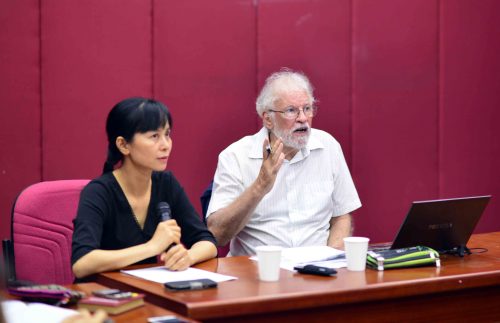Utility: Meaning, Characteristics and Types
Generating place, time, and quantity utilities for goods is the mission of supply chain management. Form utility is created by the design of the product or service itself. The more precisely a good or service is targeted towards customer needs and desires, the higher its perceived added value (i.e., form utility) will be. In other words, form utility is obtained by transforming customer needs into products or services.
Utility of Possession
A useful commodity may not here utility of goods depend upon the intensity of wants. Amanda King, Ph.D., professor of economics, has taught at Georgia Southern University since 2002. King’s research interests include the impact of critical and user reviews on experience goods, the decision… From the two tables above, Bart’s budget allows him to purchase both beef and pork or purchase only one type of meat.
Starbucks is a great example of a business that creates place utility by having locations all around the world, making it simple for customers to find a convenient spot to grab a cup of coffee. Utility function is a way to determine the desirability of products or services. However, there is some debate on whether it is possible to measure utility or not.
Customer Service
For example, Bart can purchase 2 pounds of beef for $20, which gives him 17 utils, or 4 pounds of pork at $20, giving him 20 utils. You determine the total based on the numerical value assigned for each. Making time utility is created by a product available in a wide variety of stores and locations is considered an added value because it’s more convenient.
In economics, utility refers to the satisfaction levels consumers receive from buying and using a product or service. According to utility theory, people make purchase decisions based on the degree of satisfaction they get from an item or service. That is why goods with higher utility are prioritized higher in a person’s budget.
- Over the last decade, multiple studies have shown that well-executed supply chain strategies can enhance revenues, improve fixed-capital efficiency, control working capital, and limit tax burdens.
- Most people typically think of place utility as a physical or brick-and-mortar location such as a retail store or shopping mall but the digital age helps broaden the definition of availability.
- A useful commodity may not here utility of goods depend upon the intensity of wants.
- Despite our definition, the notion of “utility” in marketing remains fairly nebulous.
Utility’s Impact on Consumers and Economics
Negative Utility is that utility where if the consumption of a commodity is carried to excess, then instead of giving any satisfaction, it may cause dis-satisfaction. In the table given above the marginal utility of the 7th unit is negative. This utility is created in rendering personal services to the customers by various professionals, such as lawyers, doctors, teachers, bankers, actors etc. We choose to do things when the benefit exceeds or just equals the cost. Thus, the concept of utility is at the heart of all economics and is the underlying concept that leads to the creation of demand. However, we understand that not all choices are made purely based on dollar value and account for this when considering how decisions are made.
Our mission is to empower people to make better decisions for their personal success and the benefit of society. Possession utility speaks to the actual act of product possession — such as consumers driving a new car off the lot or having furniture delivered to their home. Place utility refers to the ability of consumers to get what they want, where they want it. Often applied to brick-and-mortar stores, utility of place is paramount for customers looking for familiar items that are easy to obtain. With so many companies now competing for consumer interest both online and in-person, market saturation is a significant concern. As noted by a New York Times article, “people hate ads.” Oversaturated and overwhelmed by ads across desktops, mobile devices, and in-person, prospective buyers are now tuning out enterprise efforts to impress.
It refers to the sum of a person’s satisfaction from consuming all units of a certain commodity. The second one is marginal utility, wherein additional utility is gained as a person consumes additional units of a product or service. Time utility is created by having products available when customers demand them. Supply chain managers must coordinate the movement of inventory from production and storage locations to demand locations as needed.


